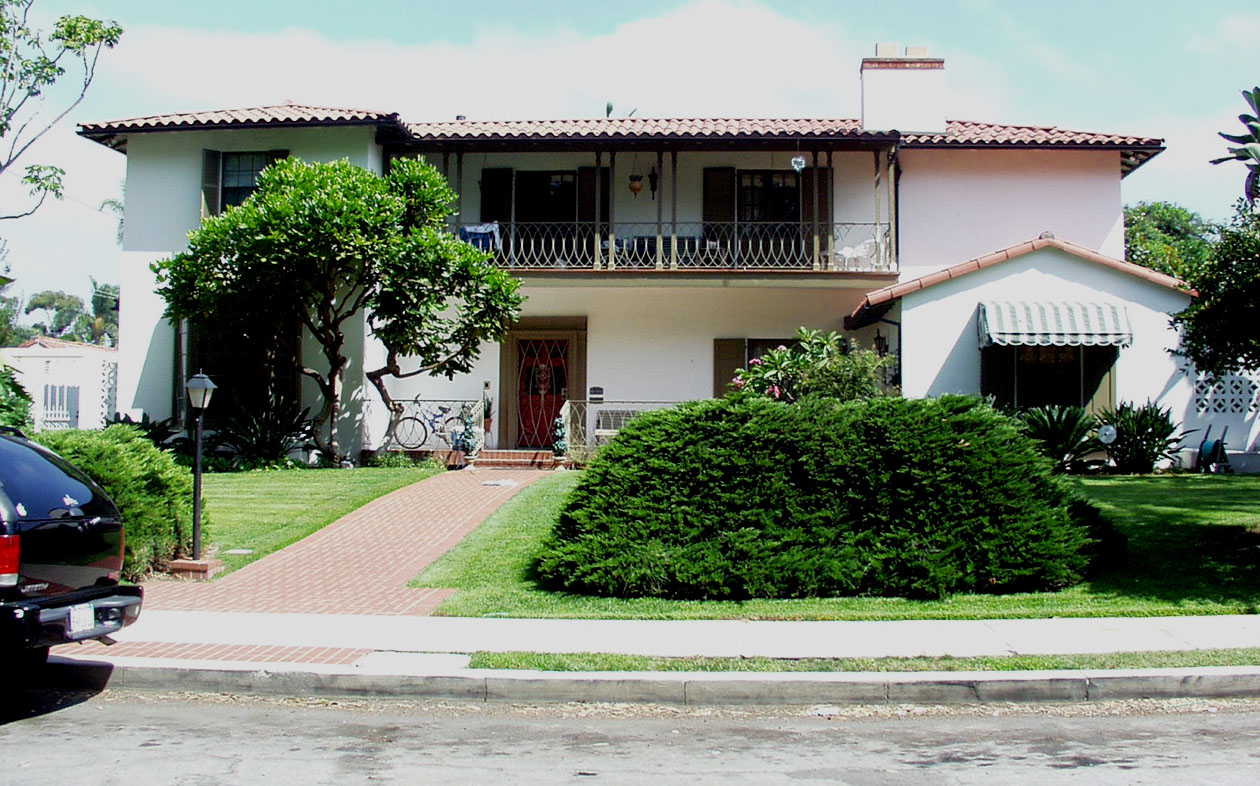By Donald H. Harrison
SAN DIEGO, Calif.— It hit four bases, making it in the
world of historic preservation something akin to a grand slam home run.
The Casa de Tempo played a role in the cultural and economic development of
the city of San Diego. It was associated with two historic events in our
city. It is a beautiful example of the Monterey Revival form of Spanish
colonial architecture. The architect who designed it is considered a
master.
 Culturally
important. Historically significant. Beautiful architecture.
Highly-regarded architect. The large two-story home, which had
been relocated from Balboa Park to neighboring 1212 Upas Street, had each of
these four qualities.
Culturally
important. Historically significant. Beautiful architecture.
Highly-regarded architect. The large two-story home, which had
been relocated from Balboa Park to neighboring 1212 Upas Street, had each of
these four qualities.
Normally, like a crowd at a baseball game witnessing a bases-loaded home run
making a big arc over the center-field fence, I would have been on my feet
cheering for the preservation of this landmark. But when, as a member of
the City of San Diego's Historical Resources Board, I voted on Thursday,
August 24, in favor of recognizing it as an historic property, I did so
with a sour taste in my mouth.
Hitler had ruined it for me.
The 3,700-square-foot home had been built for the 1935 California Pacific
International Exhibition in Balboa Park. That exhibition was
staged two decades after the 1915 Panama-Pacific Exhibition which had
transformed the former City Park into a wonderland of museums, gardens,
fountains and walkways. The city's leadership, reeling under the effects
of the Depression, hoped that this second exposition could stimulate San
Diego's economy by advertising it as a modern, up-to-date tourist
destination..
According to a report presented to the Historical Resources Board by
City of San Diego senior planners Cathy Winterrowd and Dr. Diane Kane, when
noted San Diego architect Sam Wood Hamill designed the Casa de Tempo,
"the house was intended to introduce Exposition attendees to modern
materials, products and home designs to spur consumer spending during the
depths of the Great Depression. Entrance tickets to the house enabled
visitors to participate in a raffle in which the winner agreed to relocate the
house from the fair grounds to a permanent site."
The raffle prize was the house itself, "loaded with modern conveniences
and products," according to the city planners. "The twelve room
house, featuring four bedrooms, five baths, a den/ radio room and attached two
car garage, cost around $35,000 to construct. Its fully furnished value
was approximately $50,000, a princely sum in 1935..."
The winning raffle tickets were purchased by Jorge and Alicia Almada.
She was the daughter of a General Plutarco Elias Calles, who had served as
President of Mexico from 1924 to 1928 while pursuing controversial policies in
opposition to the Catholic Church.
Although Mexico's Constitution contained various laws restricting the clergy,
they were not rigorously enforced until Calles decided in 1926 to put teeth
into these provisions. For example, someone convicted of inducing a minor to
join a monastery could be imprisoned. Even wearing the clothing of the
Catholic clergy was subject to a stiff fine. (1)
Even after he left office, many people considered Calles
to be Mexico's behind-the-scenes dictator right up to 1934 when Lázaro Cárdenas,
a reformer, was elected president. Although he initially supported Cárdenas,
Calles eventually opposed the new leader's many reforms, branding them
communistic. With tensions between the two men high, Cárdenas exiled Calles
to the United States in 1936. Supposedly the Mexican police who arrested
Calles found him reading a copy of Mein Kampf written by Germany's Nazi
dictator. (2)
Thanks to the raffle, Calles had a nice new home to go to. He spent
approximately five years in San Diego, often commenting on the international
political scene. Consultant Beth Montes, who filed the application for
having the home recognized as a historic place (thereby making its owners
eligible for property tax reductions if they preserve the home appropriately),
did a thorough job of researching the property as well as the exiled
president.
In the packet was an October 20, 1945 obituary of Calles clipped from The
San Diego Union. Here is the paragraph that eliminated any sense of
joy I had in voting for the historic designation: "During an interview on
the day of his arrival (in San Diego), Calles disclosed candidly that he
greatly admired Hitler, whom he described as a "man with strong
character—a self-made man. He is a sincere nationalist and by what I
have read he is a patriot."
After Calles returned to Mexico, the property changed hands several
times. The current owner, who is unrelated to either Calles or to his
brand of politics, is Lynn Lancaster, who purchased the home in 1996.
Beth Montes, her consultant, is the president of the Save Our Heritage
Organization.
In San Diego, our airport is named for Charles Lindbergh, the flyer who was a
supporter of Nazi Germany before World War II. But, of course, the
airport was named for him because in a plane manufactured in San Diego, he was
the man who first flew solo across the Atlantic Ocean.
Similarly, in recognizing the Casa de Tempo as a historic venue, the
Historical Resources Board took cognizance of that particular house's
connection both to the California-Pacific International Exposition and to the
five-year exile that Calles spent there. The board also gave its enthusiastic
approval to the house as a venue that, for its role in the 1935
California-Pacific Exposition, was an important component in San Diego's
cultural development. Furthermore, it is a fine piece of architecture
designed by a master architect, the same man who designed the County
Administration Building on the edge of San Diego Bay.
* * *
(1) Jim Tuck, "Plutarco Elias Calles: Crusader in Reverse," http://www.mexconnect.com/mex_/history/jtuck/jtcalles.html,
accessed August 27, 2006.
(2) Ibid

